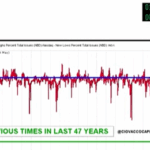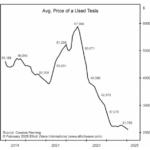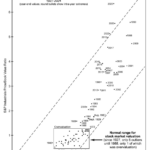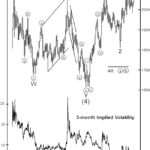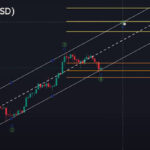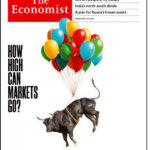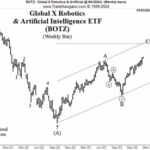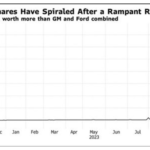In the following video by Chris Ciovacco, he looks at a Stock Market Signal that has only occurred three times in the last 47 years.
Tesla’s Troubles — Is it Musk or is it More?
Tesla’s stock price is now less than half its peak only three months ago. Think there may be trouble brewing elsewhere too?
Stock Prices are Out of This World
I thought the year-end 2021 overvaluation would never be surpassed. But as you can see, the year-end 2024 reading is both higher and further to the right. It is the highest multiple ever recorded for S&P Industrials’ price to book value and the fifth-lowest level for the S&P Composite’s dividend yield, the four lower readings all occurring in 1998-2001.
Invest Like Warren Buffet
Warren Buffett now owns more T-bills than the Federal Reserve.
It’s true: Buffett’s investment firm, Berkshire Hathaway, owns $235 billion worth of T-bills; the Fed owns $195 billion worth. Of course, most of the Fed’s money is in other government-guaranteed debt. Buffett’s is mostly in stocks. Still, his current cash holdings are about twice the average for the previous five years. How did he accumulate so much cash? By selling stocks in this heady environment.
Gold Prices: The calm before a record run
Gold’s three-month implied volatility has declined to its lowest level in over four years. While low volatility is not a short term timing tool, low volatility eventually precedes high volatility. At the same time, total open interest in gold futures has declined to its lowest level since December 2018, as traders are either closing futures contracts or abstaining from opening new ones. The low level of open interest means that investors’ attention is turning away from gold, and the low implied volatility indicates that investors do not expect gold to move much over the course of the next three months. Both are preludes to what we see as a major move forming in gold prices.
Elliott Wave Analysis of Bitcoin
Today we have an in-depth Elliott Wave analysis of the Bitcoin Chart from Crypto Unplugged.
This excellent analysis looks at several ways to determine a potential top for Bitcoin and where we currently are in the cycle. The First analysis uses channels and Fibonacci Time Pivots.
Why You Should Pay Attention to This Time-Tested Indicator Now
Magazine covers can indicate “social mood” and social mood affects the stock market. Could this magazine cover be indicating something, now?
Gold: Setting Near-Term Price Targets
Even though the mainstream media was looking to so-called fundamentals — such as the action of the dollar or bond yields — Elliott Wave International focused on the patterns of investor psychology
A.I. Revolution and NVDA: Why Tough Going May Be Ahead
The topic with all the buzz these days is Artificial Intelligence (AI) and its future. The potential benefits include automating repetitive tasks, enhancing productivity, data analysis, assisting in medical research — and more.
… the mood surrounding AI is way more optimistic than pessimistic.
Just think about how investors have bid up the price of AI-related stock Nvidia Corp., which has a market capitalization of around $2 trillion. That’s more than the GDP of Australia or South Korea. Indeed, if Nvidia was a country, it would rank just outside the top ten largest economies on Earth. Yet — a word of caution: Trends generally don’t go up or down in straight lines without significant interruptions.
Mini-Manias: Beware Short-Term Trading Frenzies – Like This One
Most investors know the meaning of a “mania,” i.e., the “Tulip Mania” of the 1600s and more recently, the mania surrounding technology stocks in the late 1990s, etc.
As you might imagine, these manias usually occur during rip-roaring bull markets.
Yet, some “manias” may unfold even during bear-market rallies, and when these “mini-manias” end, they can burn investors just as much as those full-blown bull market manias.
